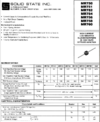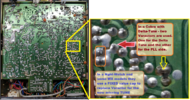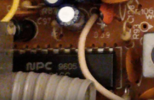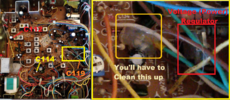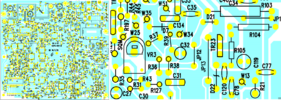Actually, you should be ok just to look at voltages.
The PLL uses the Channel selector to decide a frequency to look at from the VCO - to obtain that frequency the PLL works with the VCO - using the Varactor - to obtain that frequency.
(It's why I showed you the foil side of the board, you appear to have everything you need, and you also have a RED TX light - which would not have been the case if the radio was not in lock.)
So to do that it starts by sending a voltage to it, and the Varactor is biased using this voltage - just it's reverse biased - shows a high impedance to the flow of power thru it - which is great, because the Varactor is special for a purpose of having to exhibit capacitance - a capacitance that changes as voltage with no power (no current - high impedance) is applied, a transistor set up to run as an oscillator then can take this capacitance and use a coil in its circuit support, and make it "squeal" at a specific frequency that changes with the voltage across that varactor.
The Higher the Voltage - the Higher the Capacitance value the Diode has - this then forces the oscillator to "slow down" - but how does the PLL know this?
That is where the "Loop" comes in.
The PLL uses the 10.240 crystal as a clock and as a source for timing - and the channel selector as a means to divide the timing signals to a point where a loop on one side VCO, can be compared and adjusted by a loop on the other -PLL Local Oscillator.
So, what you need to know is if the radio can show a RED light, do I have any signal or power to make the TX side work?
Thats is where a DVM can come into play, and you can see the "LOCK" function by seeing the voltage at that test point go up and down as you tune the slug for the Varactor.
So go back to those threads and look for those "test points" and the associated graphics - you'll see where to hook up your leads and check for the Voltage at the test point, change the channel too from 1 to 40 - that voltage changes, or at least it should.
I'll stop here and let you figure out your notes and how to develop a plan for your effort to fix this thing.
